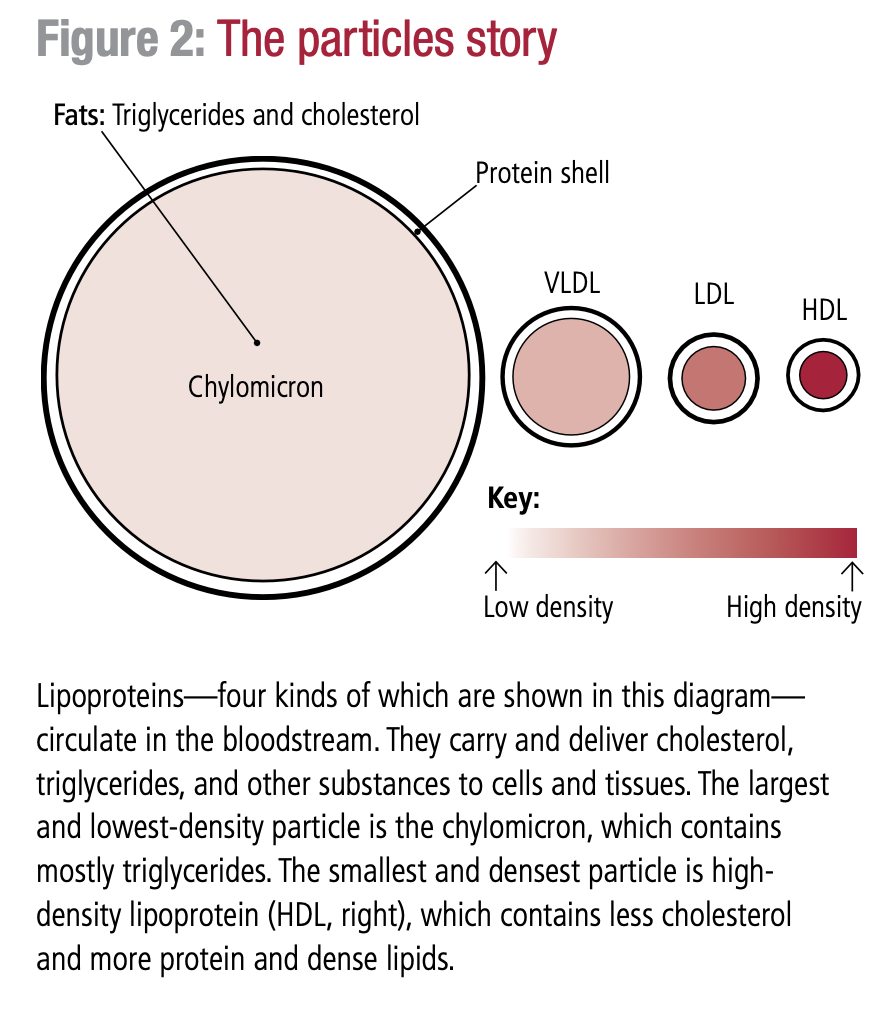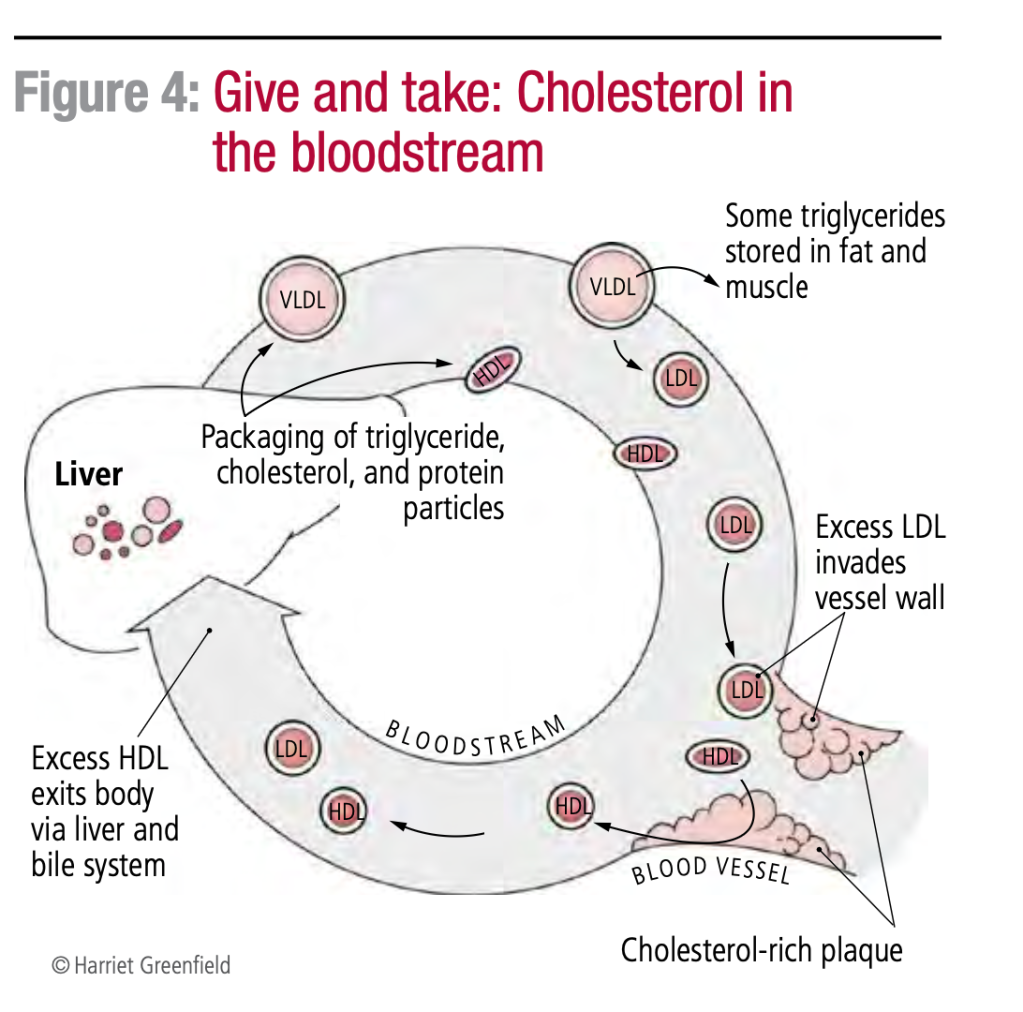These are my notes from reading about Cholesterol, diet and cardiovascular diseases. I am not a doctor, so this is for your information only and please consult your doctor or do your own research.
Cholesterol has an unwanted stigma and is linked with cardiovascular diseases or heart attacks. In reality, though, the role of this lipid is nothing like what people associate it with. Our body can’t function without cholesterol. Yes, CAN’T. It is a crucial component in how our bodies absorb Vitamin D, build tissues and produce hormones. 20% of our cholesterol intake comes from food while the rest are synthesized by our body with the liver being the biggest contributor. If cholesterol were not important to our survival, why would our body be designed to create its own supply?
Because cholesterol is a lipid, it is not water soluble and cannot travel by itself through our veins. It must be wrapped around inside small particles called lipoproteins that are part lipid and part protein. Lipoproteins come in different sizes, but these are the main 5 types:
- Chylomicrons are very large lipoproteins with high fat-to-protein ratio (low density). After we eat something, our intestine absorbs nutrients and breaks down fats. These fats are then turned into triglyceride molecules and packaged into Chylomicrons.
- Very-low-density lipoprotein (VLDL) also carries fats and cholesterol to tissues. Smaller than Chylomicrons, VLDL is made in the liver, not in the intestine. While the intestine generates Chylomicrons, it passes carbohydrates and proteins to the liver where they are turned into triglycerides and packaged into VLDL.
- As Chylomicrons and VLDL travel through our veins and offload their cargos of fatty acids, they become the denser and smaller Intermediate-density lipoprotein (IDL)
- As IDL continues to circulate in our body and loses its triglycerides, it becomes Low-density lipoprotein (LDL) which consists of mostly cholesterol and the protein vessel.
- High-density lipoprotein (HDL) contains a higher protein-to-fat ratio than the other four mentioned above. Another difference between LDL and HDL is that the former is wrapped around by a molecule called apolipoprotein B (apoB) and the latter by apoA.

As you can imagine, the more food we eat, the more Chylomicrons and VLDL our intestine and liver produce and eventually the more LDL there is. In case there are more LDL particles than our body needs, the liver will absorb as many as it can, with the help of HDL, and repurpose excess LDL into lipoproteins (VLDL). And if the liver can’t clear the excess LDL, then we have a problem.
Some excess LDL will eventually get stuck in our artery wall and become oxidized. When that happens, these uninvited guests to our arteries not only overstay their welcome, but also attract other LDL particles to join them. This accumulation of LDL narrows the flow of blood to other parts of our body, especially the heart and brain. In the worst scenario, it can lead to a heart attack or a stroke.
HDL is called a good lipoprotein and it somewhat deserves the recognition. Studies show that HDL helps suck excess LDL out of the artery wall and transport such LDL back to the liver for repurpose. Sounds good, doesn’t it? Well, there are two problems with HDL. The first is that there is not enough research on HDL. Dr Peter Attia lamented that we didn’t understand HDL as well as we did LDL. Nor do we know why efforts to raise HDL levels don’t lower the odds of heart attacks. The second problem, per Harvard University, is that there are some types of HDL that not only do not remove access LDL, but they also bring LDL to the artery wall and facilitate the oxidation process. Again, this goes back to our inadequate understanding of HDL.

What can we do?
Harvard University suggests the following to lower the risks of cardiovascular diseases:
- Walk at least two hours a week
- Exercise
- Quit smoking
- Eat 1,200 mg less of sodium a day
- Have a healthy diet and maintain healthy weight
Diet is a rabbit hole as there are thousands of studies out there on the topic and it’s not uncommon to see studies offer conflicting advice. Nonetheless, here is what I have gathered so far that seem to be universally agreed as best practices to prevent cardiovascular diseases:
- Avoid trans fat. According to Harvard University, any food with less than 0.5g of trans fat per serving can display the amount as 0g on the nutrition label. It’s best to avoid food with “hydrogenated” on the ingredient list, commercially baked goods, deep-fried restaurant foods.
- Say NO to sugar and refined cards
- Limit saturated fats. The American Heart Association (AHA) recommends limiting saturated fat to 5% or 6% of daily calorie intake.
- Favor fiber and good foods such as avocados, olive oils, whole fruits, vegetables, nuts, fish or seafood.
Overall, what I read so far about cholesterol, lipoproteins and how they are related to cardiovascular diseases is so fascinating, particularly how Mother Nature designed our liver and lipoproteins to have check and balance. Plus, the older I am, the more I believe that good health is the best long-term investment I can make and the best gift I can give to myself and my family. There is no guarantee that I will make it to old age and live healthily. But at least I have some information to work with.
This field is anything, but straightforward. If you share the same interest as I do here, I suggest you do your own research and talk to a doctor.
Leave a comment